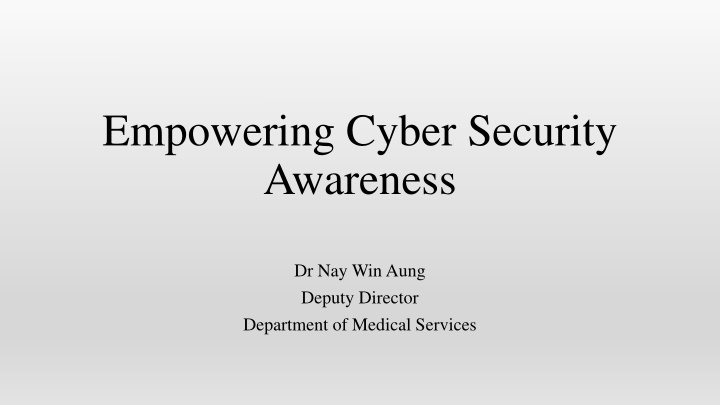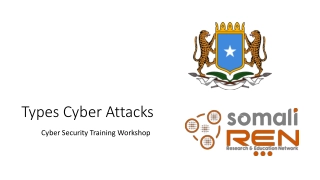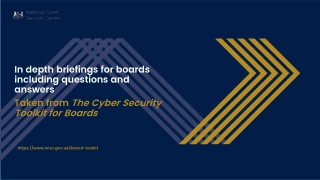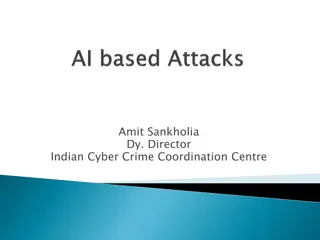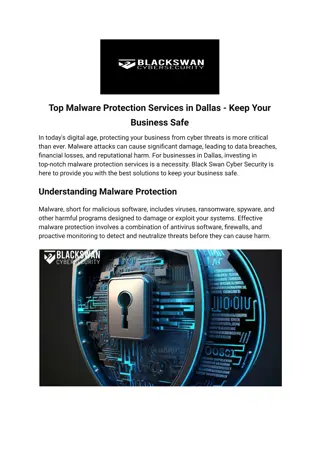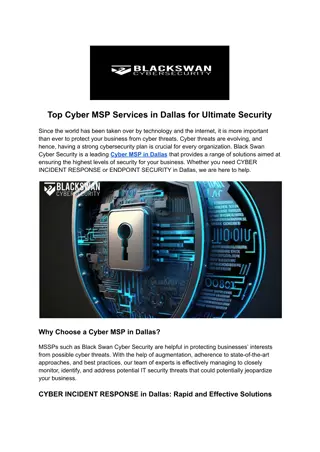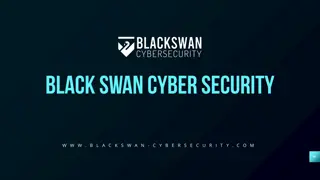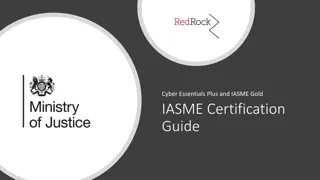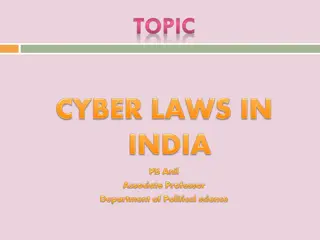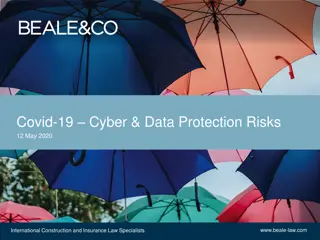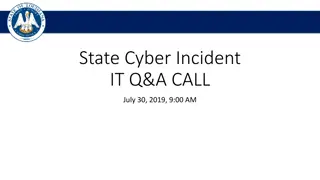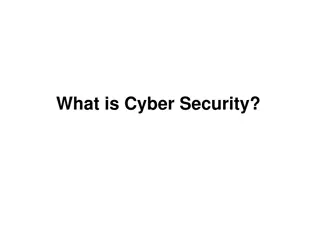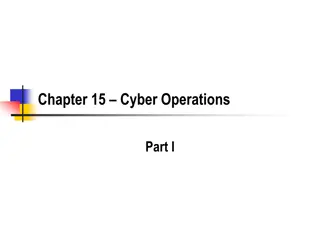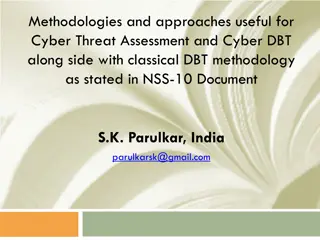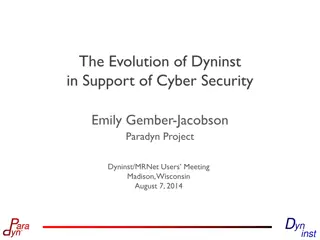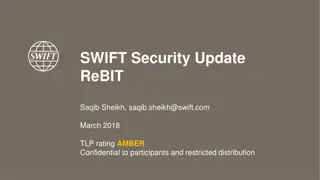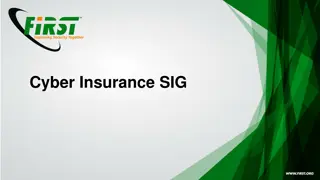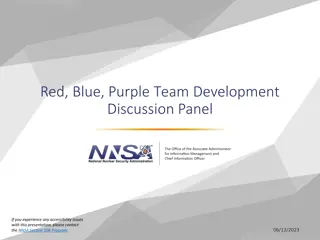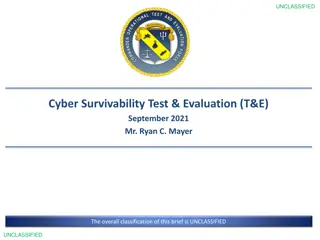Empowering Cyber Security Awareness
Delve into the critical realm of cybersecurity threats and empower individuals with knowledge and practices to safeguard against online risks. Explore topics such as malware, phishing, password security, and more for enhanced digital safety.
Download Presentation

Please find below an Image/Link to download the presentation.
The content on the website is provided AS IS for your information and personal use only. It may not be sold, licensed, or shared on other websites without obtaining consent from the author.If you encounter any issues during the download, it is possible that the publisher has removed the file from their server.
You are allowed to download the files provided on this website for personal or commercial use, subject to the condition that they are used lawfully. All files are the property of their respective owners.
The content on the website is provided AS IS for your information and personal use only. It may not be sold, licensed, or shared on other websites without obtaining consent from the author.
E N D
Presentation Transcript
Empowering Cyber Security Awareness Dr Nay Win Aung Deputy Director Department of Medical Services
Introduction Brief overview: "In our digitally connected world, cyber threats are ever-present, making cybersecurity awareness crucial for personal and collective safety." Purpose: "This presentation individuals with the knowledge and tools needed to protect themselves against cyber threats." aims to empower
Cyber Threat Landscape Types of threats: 1. Malware: Viruses, worms, and trojans. 2. Phishing: Deceptive emails and websites. 3. Ransomware: Encrypting files for ransom. 4. Social Engineering: Manipulating individuals to divulge information.
Why Cyber Security Matters Personal impact: 1. Identity theft: Loss of personal information. 2. Financial loss: Stolen funds and fraudulent transactions. 3. Reputation damage: Professional and personal consequences. Global impact: 1. Economic consequences: Impact on businesses and nations. 2. National security: Cyber threats as a potential threat to countries.
Common Cyber Threats 1. Phishing attacks: Spoofed emails, deceptive links. 2. Malware infections: Downloaded malicious software. 3. Social engineering tactics: Manipulative approaches to gain trust.
Password Security Best practices: 1. Use strong, unique passwords. 2. Employ password managers. 3. Enable two-factor authentication.
Secure Wi-Fi Practices Importance of secure Wi-Fi: 1. Use WPA3 encryption. 2. Set a strong router password. 3. Regularly update router firmware.
Software Updates Significance of updates: 1. Patching vulnerabilities. 2. Improving overall system security. 3. Enabling automatic updates for convenience.
Email Security Recognizing phishing emails: 1. Check sender's email address. 2. Hover over links to preview the destination. 3. Avoid downloading attachments from unknown sources.
Social Media Awareness Risks associated with oversharing: 1. Personal information: Birthdays, locations, etc. 2. Location sharing: Risks of broadcasting real-time locations. 3. Connections: Accepting friend requests from unknown individuals.
Mobile Device Security Secure usage: 1. App permissions: Review and limit access. 2. Device encryption: Protect data on the device. 3. Regular updates: Ensure the latest security patches.
Public Wi-Fi Risks Dangers of unsecured networks: 1. Man-in-the-middle attacks. 2. Data interception: Risks of transmitting sensitive data on public Wi-Fi.
Cyber Hygiene Habits Establishing good habits: 1. Regular backups: Protecting against data loss. 2. Monitoring accounts: Detecting unusual activities. 3. Being cautious online: Questioning unsolicited requests and links.
Social Engineering Awareness Recognizing manipulation tactics: 1. Impersonation: Fake identities and authority figures. 2. Pretexting: Creating false scenarios to extract information. 3. Baiting: Luring individuals into traps with promises of rewards.
Cybersecurity Education Importance of staying informed: 1. Training programs and workshops. 2. Utilizing online resources. 3. Encouraging continuous learning in the rapidly evolving field.
Incident Response What to do if you suspect a cyber attack: 1. Reporting incidents to IT or security teams. 2. Avoiding panic and following established procedures.
